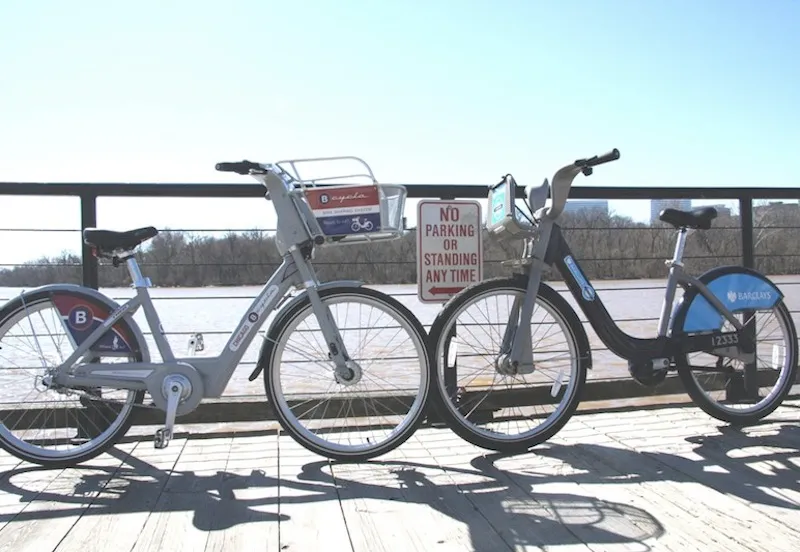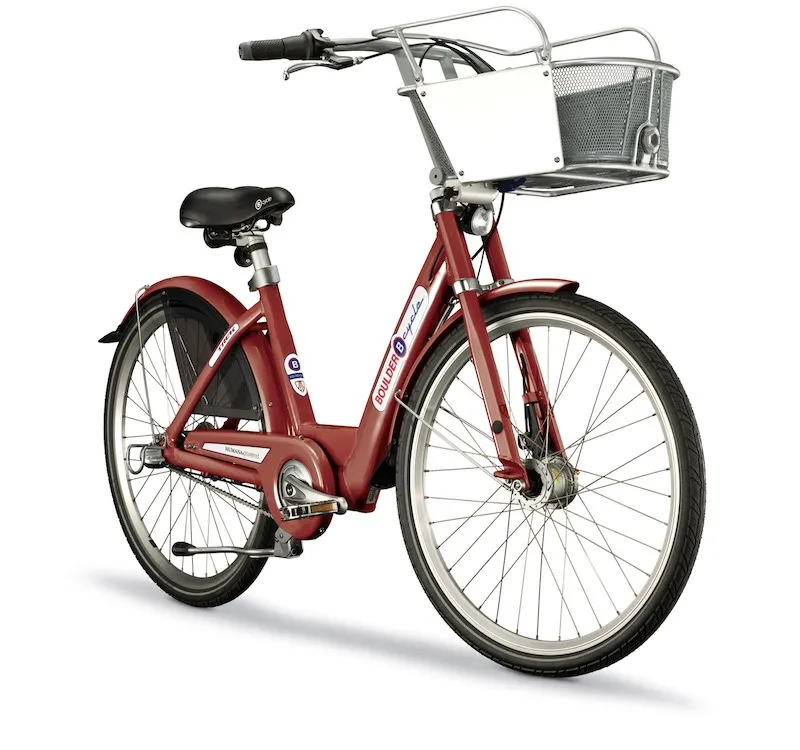Bike sharing is booming in North America, but most news surrounding the phenomenon regards when and where new programs are launching. At Urban PressCamp, running this week in Washington DC, BikeRadar explored the basics, including bike sharing equipment.
Among the dozen exhibitors at this small cycling trade show focused on urban commuting-centric brands and products, we found not one but two North American bike sharing operations displaying their wares.
Trek-backed B-cycle and Montreal-based Public Bike System, which is often referred to by its Montreal system name, Bixi (bike taxi), were stationed roughly 8ft apart in a downstairs conference room in the House of Sweden, which played host to this first-year press event organized by Life Boat Events.
While the question ‘what’s the difference?’ is what comes to mind in situations like this, it’s ‘what’s the same?’ that’s the real news. On a continent dominated for years by car culture, the fact that two bike sharing system operators look to be healthy and growing is good news for devotees of two-wheeled, human-powered transportation.
“We see this is as a new, viable mass-transit option that works in conjunction with existing systems,” said Alain Ayotte, CEO of Public Bike System, adding that his company have already installed systems in Melbourne, Washington, DC, London, Minneapolis and Montreal, and claims to have 14,000 bikes in operation around the world. “Our goal is to be seen as a key cog in urban mass transit systems, where bike sharing takes care of the first and last leg of a commuter’s journey.”
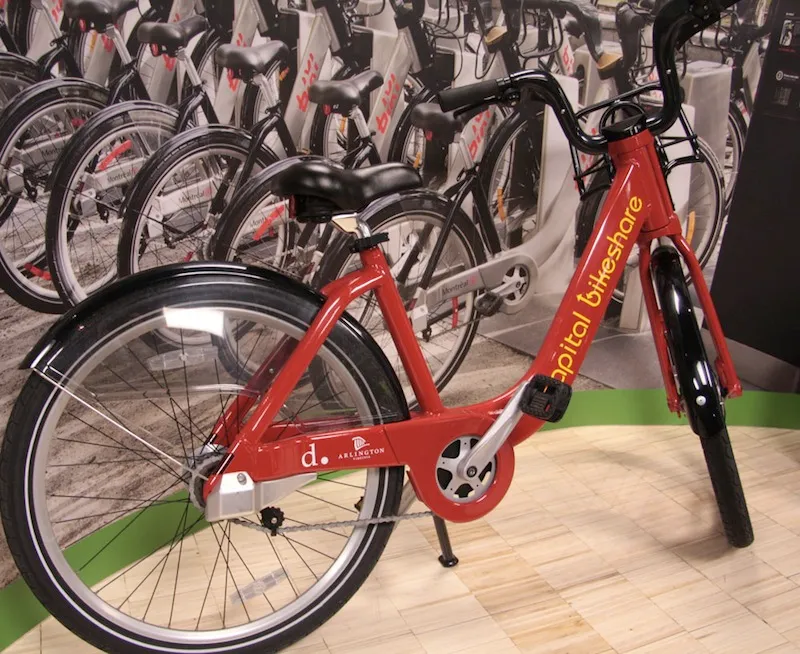
Public Bike System's BIXI bike is made by Devinci Cycles in Quebec, Canada
Both systems have similar operating models: users buy memberships ranging from a day to a year ($50-$80), and check out bikes from docking stations, which typically are strategically located around urban centers. Depending on the individual system, the first 30-60 minutes of any ride is covered by the cost of the membership. After that, incremental charges begin to accrue, with all financial transactions tied to the rider’s credit card.
The goal, explained B-cycle sales director Lee Jones, is not to be a bike rental system where users ride one bike all day. Instead bike sharing is meant for short hop trips that are too far to walk but too short to drive.
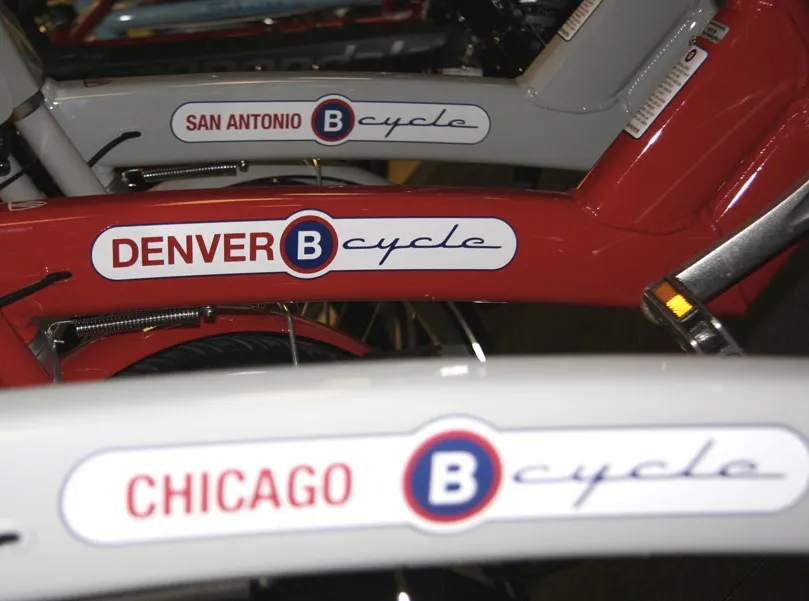
Trek produces the B-Cycle bikes in three colors: grey, red and blue
B-cycle have systems in place in Denver, Chicago and Des Moines, Iowa. In 2011, they’ll more than double that number, launching programs in San Antonio, Madison, Omaha, Broward County, Hawaii, and Boulder, Colorado. Public Bike Share are set to announce new systems in Toronto and Ottawa. Both operations are also in the running for a giant New York City system contract, which could include an initial launch of a massive 10,000 bikes.
B-cycle and Public Bike System are designed for year-round use. All of the components, including check-out kiosks, docking station and bikes are heartily constructed to stand up to bad weather, as well as destructive riders. Frames and components are fashioned for durability, not weight saving — both companies’ bikes weigh in near 40lb.
Internal hub drivetrains are typically three-speed, though both operators offer a seven-speed option. The Shimano dynamo hubs also provide enough power to illuminate safety lights and run new-for-2011 internal GPS systems. The collected GPS data allows users to track ride data such as number of calories burned and amount of carbon emissions offset. This information can be kept private, or shared using social media sites such as Facebook.
Ride data is also available to city planners and system operators, who can use it to make sure a bike fleet is effectively dispersed between docking stations. The data is also useful for additional analysis, such as examining traffic flow patterns. That kind of information can allow city planners to see how, where and when people ride, and then adjust accordingly. All ride data is anonymous, B-cycle’s Jones assured us.
Differences between the two operations do exist. For now, B-cycle are limiting bike color choices to red, blue or gray. Public Bike System, who call themselves a bike buffet, have a broader color pallet. London chose dark blue. DC bikes are red. Minneapolis opted for lime green. B-cycle get the nod for accoutrements. Their front basket has far more cargo carrying capacity, and the B-cycle steeds come equipped with a handy cable lock, meaning you can make worry-free stops between docking stations.
Both operations employ modular docking-station configurations, meaning cities have great flexibility when it comes to choosing dock locations. A solar power option is also available for the stations. “Ours is basically a Lego-type system,” said B-cycle’s Jones. “We build in 5ft shapes that take advantage of urban real estate access. There’s a ton of flexibility. We can also do bolted and non-bolted, which allows for wintertime removal.”
B-cycle’s major 2011 improvement is to their user-interface. Day-pass-user checkout is simplified and made quicker via improved kiosks and back-end software development. Membership card holders need only pass their RF-imbedded card in front of a reader on the docks to grab a bike and go.
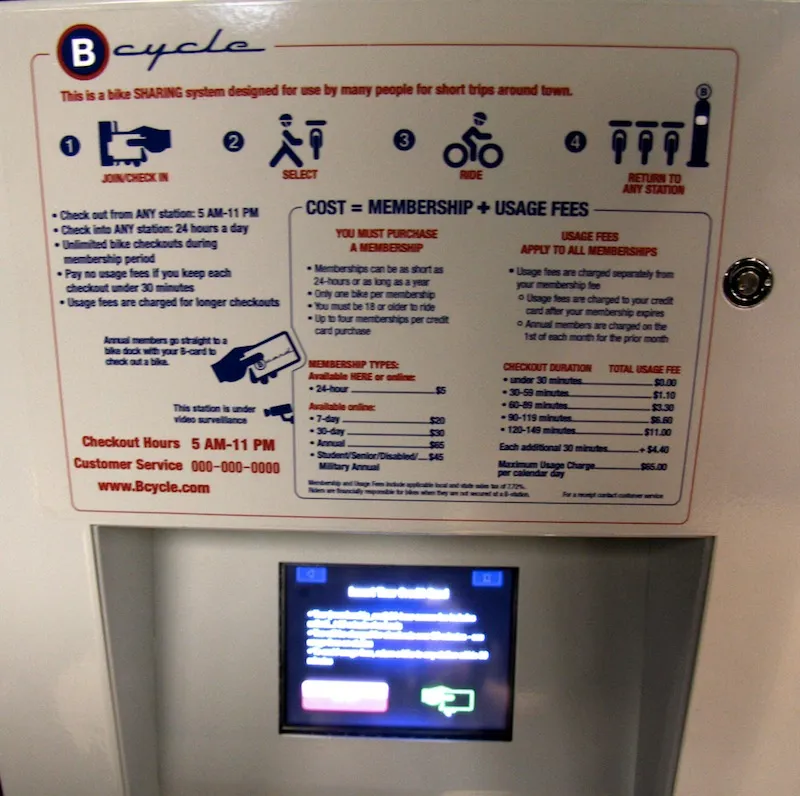
B-Cycle worked to streamline their kiosk interface for 2011
A BikeRadar test of the B-cycle system at the tradeshow confirmed its ease of operation. You can easily be on a bike and pedaling in less than 90 seconds, even if you have to go through the day-pass buying process. The process is also multilingual, with a Spanish option at the top of the touch-screen menu sequence. Public Bike System didn't have a test kiosk at the Urban PressCamp show, but claimed similar ease of operation, and a trilingual interface that includes French.
Overall system costs vary depending on the number of bikes and docking stations being installed. B-cycle quoted a $3,500-$5,000 per bike pricetag, which covers installation and all equipment. Public Bike Share tabbed $4,000 as their average per-bike cost. “Our goal is to create the first global public transport system, where there's reciprocity between all our systems all over the world,” said Public Bike Share’s Ayotte. “The more people we can get on bikes, the better off we all are.”
